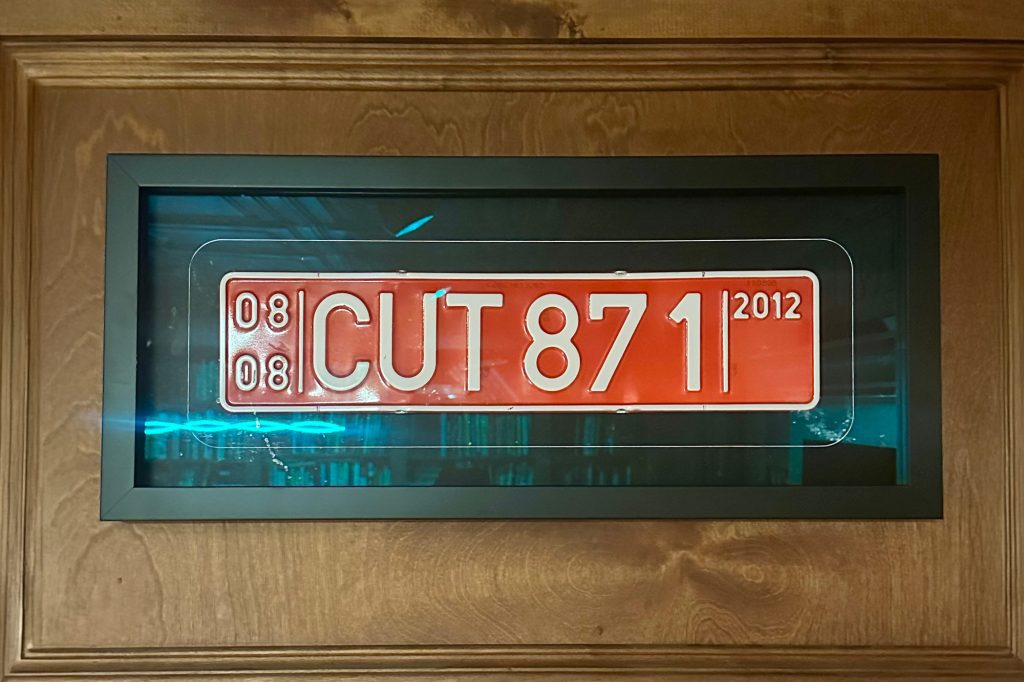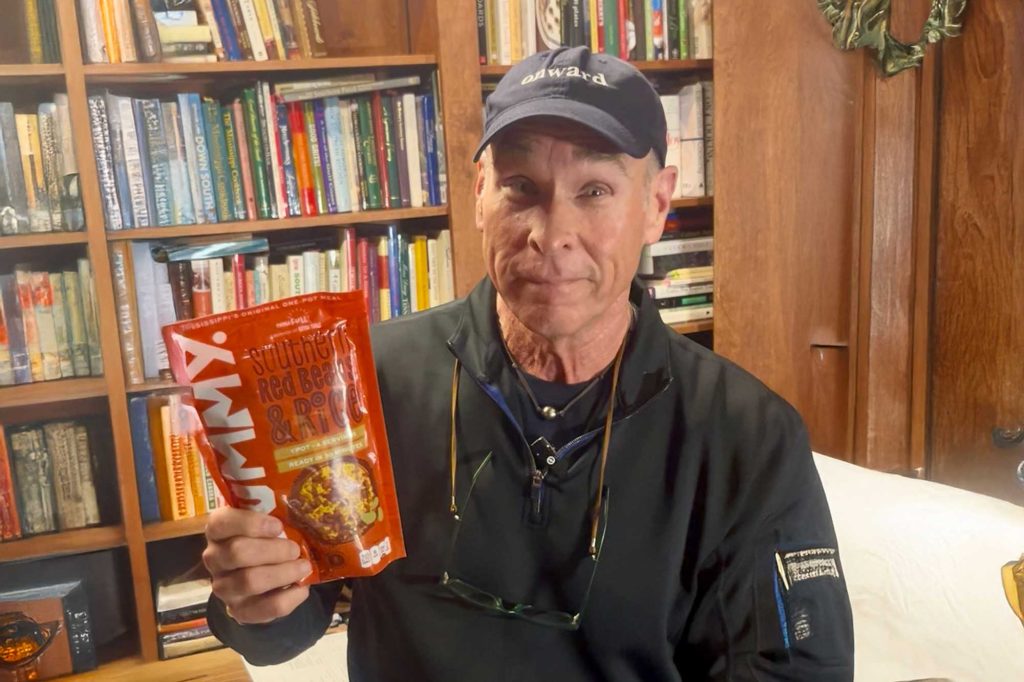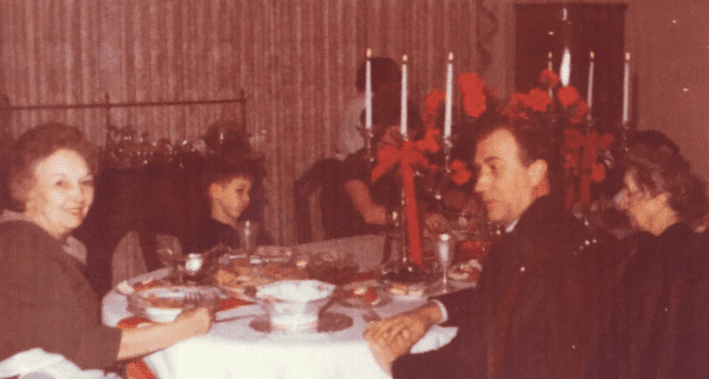
- Robert St. John says the older he gets, the more he realizes that holding on isn’t about the stuff—it’s about the stories the stuff carries.
Before every party at our house—whether it’s a fundraiser, an engagement, or just another excuse to gather people—my wife finds a reason to rearrange the furniture, repaint something, or bring home another piece. She calls it “freshening up.” I call it “buying more stuff.” Somewhere around the W. Bush administration I figured we had reached our maximum décor capacity. Yet somehow, sideboards still multiply, armoires appear out of nowhere, and knickknacks sprout like weeds in places I didn’t know we had.
Our house has reached a stage where even the furniture has furniture, and I’m pretty sure one of the side tables is pregnant.
She loves a project and the process. The anticipation of a new piece of furniture or some little trinket gives her something to look forward to. Me? I look forward to the day we stop spending money on things we already have too much of. But I guess marriage is compromise, and I’ve learned to stay away from the battles I have no chance of winning.
I’m not a hoarder. But I have trouble letting go of some things. My phone still holds the numbers of friends and family who passed away years ago. Hitting delete feels too final, like closing a door I’d rather leave cracked open.
Some things I hold onto are practical, others sentimental. For the past fourteen years, there’s been a luggage shell propped against a wall in my driveway. To the untrained eye, it looks like clutter. Most people would see a piece of plastic taking up space. I see the start of one of the best chapters we ever lived.
That shell came from the Volvo factory in Gothenburg, Sweden, the summer of 2011. We had flown there as a family, bought a Volvo, and set out on a trip that changed everything. For six months, we wound our way across Europe, the kids drowsy in the backseat, my wife with the atlas in her lap, and me steady at the wheel. When it ended, Volvo packed that shell inside the car and shipped them both back to America.
Letting it go would feel like throwing away more than plastic and bolts—it would be throwing away part of the best miles my family ever shared. When Volvo shipped that luggage shell back to the U.S., they probably assumed I would use it for travel, not as an outdoor art installation in the driveway.
The license plate they issued us for that trip hangs framed in my office. It’s a bright red European plate, the kind you never see here, and it reminds me daily of the adventure we shared. That red plate doesn’t just hang on the wall—it hangs on my memory, proof that we once packed up and showed our kids the world. Every time I see it, I’m reminded that the best souvenirs aren’t bought in a shop; they’re carried home in the miles and moments you never forget. And that luggage shell out in the driveway is just me refusing to throw away a piece of that story.
Part of it comes from regret. In my younger days, during the dark season of alcoholism and drug addiction, I pawned things that mattered, things I can never get back. My grandfather’s shotgun was one of them. He had given it to me, a gift of trust and legacy, and I pawned it without a thought of reclaiming it. The money was spent in one wild night and then gone forever. I’ve lived with that poor decision ever since.
Later, after my grandmother passed, I bought her house, the one she had lived in for seventy years. It was filled with treasures of another time—old radios, record players, furniture that carried history in its scratches and stains. I kept most of it, and our home today still bears her mark. But in a moment of misjudgment, I held a garage sale. Out went pieces I wish I had kept, things my children or grandchildren would have cherished. That sale has stayed with me, not for the money it brought in, but for the things that slipped out of my hands and should have been passed down.
It’s just not the person I am.
Maybe that’s why I hold on to things today. The luggage shell, the phone numbers, the framed license plate—they anchor me to memories I never want to lose. They remind me of who I was, where I’ve been, and how far I’ve come.
The older I get, the more I realize that holding on isn’t about the stuff—it’s about the stories the stuff carries. My wife buys new furniture because it gives her something to anticipate. I hang on to a piece of plastic car luggage because it holds memories of a journey. Both acts point to the same truth: we need markers in life, reminders of where we’ve been and what we’ve shared.
We live in a culture that tells us to declutter, to purge, to throw away anything that doesn’t “spark joy.” Maybe there’s wisdom in that. But there’s equal wisdom in holding on. Because some things don’t just gather dust—they hold recollections, ties to family, and the meaning of where we’ve been.
Of course, keeping too much can crowd out the present. My wife sees that. She wants freshness, space, possibility. Yet sometimes letting go too easily leaves us lighter in all the wrong ways. I’ve done that, and I’ve paid for it in regret.
The balance, I think, is this: hold on to the things that hold on to you. Not every old radio or shotgun or luggage shell deserves permanent residency in our lives. But some do. Because some things carry more than dust. They carry remembrance, connection, and meaning.
My wife will keep filling the house with new things. I’ll keep defending the old ones. Somewhere in between, we’ll keep making a life together. And in that tension—between holding on and letting go—maybe the greater truth lies. Life isn’t just about accumulating or discarding. It’s about remembering. It’s about cherishing.
So, yes, the luggage shell stays. The phone numbers remain. The regrets will linger, too, reminding me of choices I can’t undo. But all of it together—the keepsakes, the losses, the new furniture, the old radios—makes up the story of a life. And isn’t that what we’re all trying to do? Not throw away the story.
Onward.
This Week’s Recipe: Baked Potato Quiche

I call this recipe “Comfort quiche.” It’s perfect for a cold December evening. The great thing about quiche is that it can be prepared in advance and held cold in the refrigerator or frozen up to a couple of weeks. When the holidays are hectic and the house is crowded, this quiche is perfect as a lap meal in front of the fireplace served alongside a light salad.
Ingredients
1 recipe pie dough (or a store-bought version)
¾ pound red potatoes, 1/2-inch dice
4 ounces thick-cut bacon, 1/4-inch dice
4 green onions, sliced thin
1 ½ teaspoons fresh thyme leaves, chopped
8 large eggs
¾ cup heavy whipping cream
3 tablespoons + 1 1/2 teaspoons kosher salt
1 ½ teaspoons fresh ground black pepper
4 green onions, sliced thin
1 ½ teaspoons fresh thyme leaves, chopped
4 ounces sharp Cheddar cheese, shredded
4 ounces Havarti cheese, shredded
1 cup sour cream
1 tablespoon fresh chives, chopped
Instructions
Serves 6 to 8
Remove the prepared pie dough from the refrigerator. Lightly flour a clean working surface and place the dough in the center of the floured surface. Lightly dust the top of the dough as well. Begin in the center of the dough and roll upwards towards 12 o’clock, then downwards towards six o’clock. Rotate the dough 90 degrees and repeat the process. Apply more flour as needed to prevent the dough from sticking to the surface or the rolling pin. As your dough begins to resemble a circle, use the rolling pin to define the shape. Roll the dough into a 16-inch circle. Use the rolling pin to transfer the dough to your pie dish. Press the dough firmly on the bottom and up the sides of the pie dish. Using your fingers, crimp the dough along the top of the sides and trim off any excess dough. Chill in the refrigerator while making the filling.
Preheat oven to 375° F
Place the potatoes in a small saucepot with three tablespoons of salt and enough water to cover them by two inches. Bring to a simmer over medium-high heat. Cook until slightly tender, about 12 to 14 minutes. Drain the potatoes and set aside.
In a medium-sized skillet, cook the bacon over medium heat until crispy. Drain the grease and set aside.
Whisk together the eggs, whipping cream, remaining salt, pepper, green onions, and thyme. Remove the pie shell from the refrigerator. Place the potatoes and bacon in the prepared pie shell. Whisk the cheese into the egg mixture and pour over the potatoes and bacon.
Bake for 40 minutes then remove the quiche from the oven. Using aluminum foil, tent the sides of the crust and return the quiche to the oven for an additional 10 to 15 minutes. The center will jiggle just slightly when the edge is tapped when done.
Allow the quiche to rest for 20 minutes before serving.











